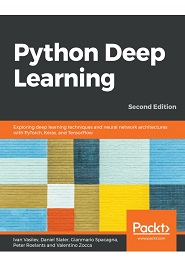
English | 2019 | ISBN: 978-1789348460 | 468 Pages | PDF, EPUB | 128 MB
Exploring an advanced state of the art deep learning models and its applications using Popular python libraries like Keras, Tensorflow, and Pytorch
With the surge of Artificial Intelligence in each and every application catering to both business and consumer needs, Deep Learning becomes the prime need of today and future market demands. This book explores deep learning and builds a strong deep learning mindset in order to put them into use in their smart artificial intelligence projects.
This second edition builds strong grounds of deep learning, deep neural networks and how to train them with high-performance algorithms and popular python frameworks. You will uncover different neural networks architectures like convolutional networks, recurrent networks, long short term memory (LSTM) and solve problems across image recognition, natural language processing, and time-series prediction. You will also explore the newly evolved area of reinforcement learning and it will help you to understand the state-of-the-art algorithms which are the main engines behind popular game Go, Atari, and Dota.
By the end of the book, you will be well versed with practical deep learning knowledge and its real-world applications
What you will learn
- Grasp mathematical theory behind neural networks and deep learning process.
- Investigate and resolve computer vision challenges using convolutional networks and capsule networks.
- Solve Generative tasks using Variational Autoencoders and Generative Adversarial Nets (GANs).
- Explore Reinforcement Learning and understand how agents behave in a complex environment.
- Implement complex natural language processing tasks using recurrent networks (LSTM, GRU), and attention models.
Resolve the captcha to access the links!